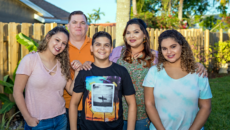How will I hear about my child?
Our families love to talk about “the call,” the moment they learned about their child. Sometimes the call is actually “the e-mail.” Either way it seems to arrive when you least expect it. But the effect is always the same: relief, excitement, joy — and fear. So what should you expect?
If you are making an independent search for an expectant mother, your first contact with your child will be a phone call or an e-mail from the expectant mother herself, a member of her family, or a friend. If you’re doing a private adoption through an agency or attorney, you will get a call or an e-mail with some details about the expectant mother. If you’re adopting from foster care, your social worker will contact you with details about the child. In an international adoption, you will get a formal referral: a document that identifies the child, and provides some medical and social information. The referral usually includes a photograph, and sometimes a video, as well. In some sending countries, the adoptive parents travel to meet a group of children; the referral is made in-country. The parents go back to the U.S. and wait for paperwork to be completed, then return to bring their child home. Parents who have gone through this process say it is the hardest path to adoption. You meet and fall in love, then spend months knowing your child is living without the care you want to provide. If your agency has an online support group, this is the time to lean on it: other traveling parents may be able to take supplies to your child, and can bring information back to you.
Whatever kind of adoption you are doing, our families say: Stay calm. Don’t get too attached to this expectant mother or this child just yet.
What do I say when I first talk to an expectant mother?
When you speak to a potential birth parent, realize that you are encountering someone with a huge problem to manage. Treat her as you would any friend with such news. Let your first thoughts be not of your needs and concerns, but of hers. There will be plenty of time later to discuss things like her medical history and your post-placement relationship. Don’t get ahead of yourself. This is about human connection. Focus on what she needs most, and address yourself to those needs. Isn’t that the kind of parent you would want, if you could choose?
Nothing can fully prepare you for the strangeness of this first encounter. But every day, people negotiate first contacts. And every day, through the power of love and authenticity, people find a way past the awkwardness and come together for the sake of a child. You can, too. Start with these sample questions:
- Ask about the pregnancy: how’s it going? Ask her whether she likes her doctor, how she’s getting to her appointments, what foods she is craving.
- Ask about the people in her life. Does she have friends or family she can talk to about what’s going on?
- Answer her questions simply and honestly. Be as open and vulnerable as you would like her to be.
- Let the conversation flow without an agenda. In a first meeting, it is less important what you talk about than that you talk, and, most importantly, listen. Remember that, although your biggest fear is that she won’t like you, her biggest fear is that you won’t like her.
What if I don’t get matched until after the baby is born?
In about a quarter of domestic infant adoptions, the birth mother doesn’t begin to plan the adoption until after the baby is born. The disadvantage: Would-be adoptive parents have to make decisions fast, and your interaction with the birth mother may be even more emotionally charged. The advantage: The baby is here, and can be evaluated before you commit to anything.
Some of our families suggest that you appoint a trusted family member or friend to be your “voice of reason.” As you get to know your birth mother, your voice of reason can gently remind you to check off these essential questions:
- Does the birth father support the adoption?
- Do the birth grandparents support the adoption?
- Did the birth mother receive prenatal care?
- Will she accept counseling?
What happens when I meet a foster child for the first time?
In foster adoptions, the agency will generally arrange a supervised meeting between you and the child. With older children, there may even be a series of meetings before placement, so that you can get to know one another. If the foster child is an infant, however, you may simply be asked to accept the placement immediately.
Once upon a time, state agencies regularly held “adoption fairs” also known as “meet and match,” where foster children were gathered to meet would-be parents. Recognizing how stressful the experience is for the children, most agencies have turned adoption fairs into information-gathering sessions, where social workers explain adoption without the children present. If your state permits traditional adoption fairs, talk to a social worker about how to interact with the children.
What does a referral look like?
In international adoptions, your agency sends you a “referral” to an individual child; you may accept it or reject it. Depending on the sending country and agency, the referral may be skimpy or detailed, but it should at least contain a name, date of birth (which may be estimated), height, weight, and a photograph.
Can I get a choice in international adoption?
Some countries with large numbers of waiting children allow agencies to send lists of available children to would-be parents. You may also get a sheaf of photographs or a DVD. Families who have experienced this process talk about the stress of choosing a child — and, by definition, not choosing other children — but many talk about simply, and unexpectedly, falling in love.
When can I take my child home?
In a private infant adoption, you will usually take your baby directly from the hospital (remember to bring an infant seat for the car or plane), even if the birth mother hasn’t finally terminated her rights. If the baby was born in another state, you may have to stay in-state for a few days or weeks while the paperwork of the Interstate Compact on the Placement of Children is transferred to your home state.
In international adoptions, the process varies by country. If your country allows proxy adoptions, and you choose not to travel, you can have your child escorted to the U.S. by a representative of your adoption agency. In countries that require you to visit, you will apply for an orphan visa before you leave the U.S., and will pick it up at the sending country’s embassy, so that you can bring the child home with you. Some of our internationally-adopting families chose to have their children escorted home so that they would be well-rested when the child arrived. Families who traveled instead say that the experience of seeing their child’s first home is invaluable. There is no “right” choice here; parents should do what feels best.






